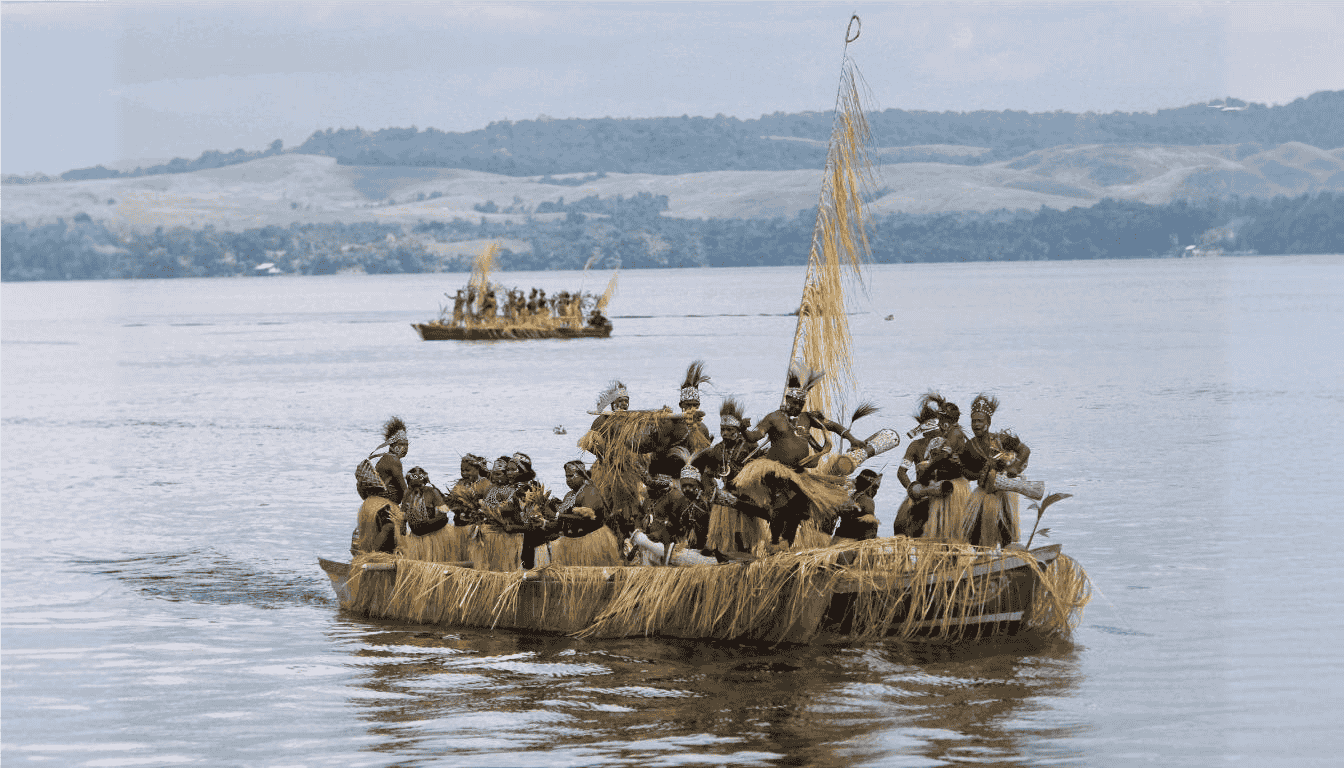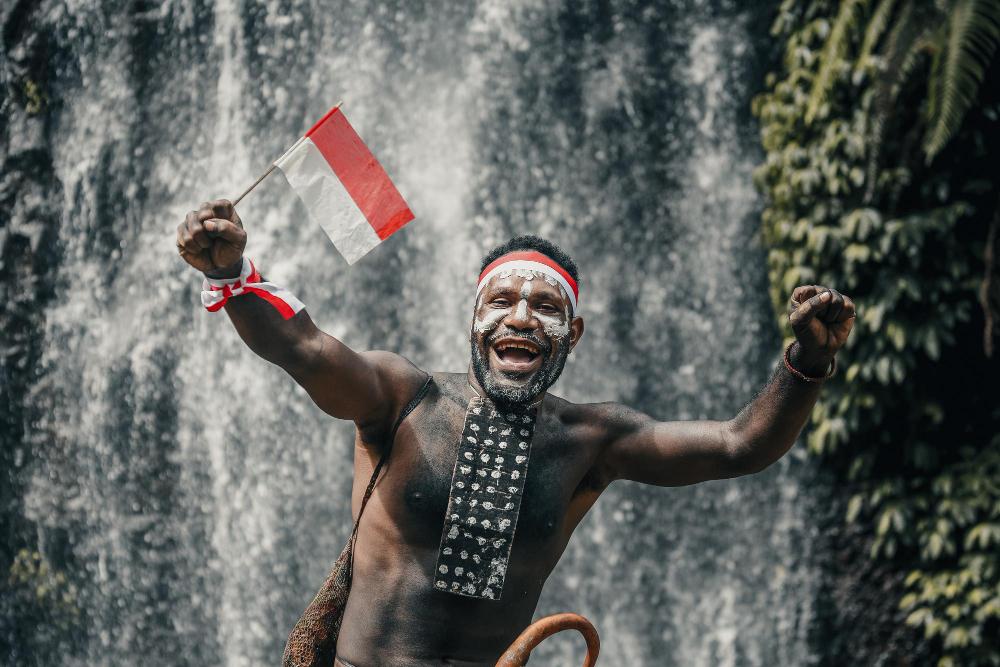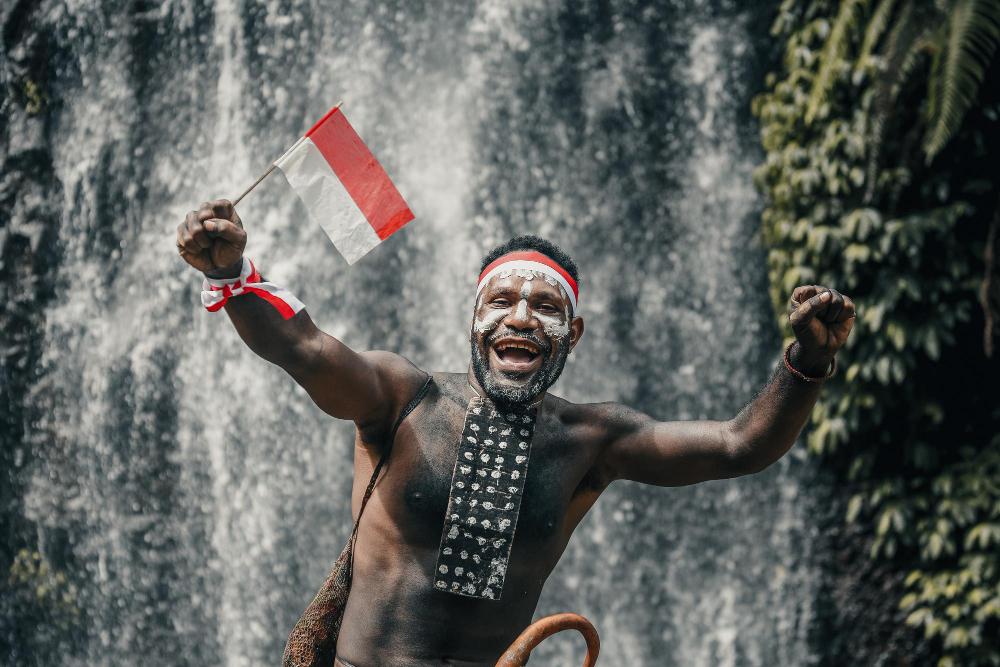The Karamo Dance is a traditional dance from Papua Highlands, originating from the tribes in the region. This dance is performed on specific occasions as an expression of joy, gratitude, and pride in the execution of certain cultural activities. Karamo performances are typically held during significant moments, such as the ceremony of a child's first contact with the ground, the relocation of ancestral remains, and other cultural events.
Distinctive Features
The Karamo Dance is usually presented in the form of performances by two groups facing each other. The dance serves as a platform to showcase achievements and gain admiration. The performance involves several basic movements, such as holding a bow, beating the tifa drum, and stepping with small leaps. The primary movement consists of forward and backward steps in sync with the rhythm of the song, accompanied by the playing of the ninbun shoot.
Costumes
Karamo dancers wear traditional attire made from natural materials, such as tree bark fibers, leaves, or bird feathers. The clothing is adorned with ethnic motifs unique to the Papua Highlands, reflecting their cultural identity. Additionally, dancers typically accessorize with necklaces made of beads, bracelets, and headpieces crafted from bird feathers or animal hides.
Musical Accompaniment
The music accompanying the Karamo Dance uses traditional instruments like the tifa drum, bamboo drums, and simple wind instruments. The rhythm is energetic and repetitive, creating a festive yet sacred atmosphere. Occasionally, the musical accompaniment is enriched with chants or shouts that further energize the dancers.
Philosophical Meaning
- Symbolizes gratitude for the blessings of nature and life.
- Depicts harmony between humans, nature, and ancestors.
- Instills values of togetherness, cooperation, and respect for tradition.
Functions of the Karamo Dance in the Life of Papua Highlands Communities
- As a Platform for Matchmaking
The Karamo Dance acts as a means for young men and women to observe each other. Unmarried individuals typically pay attention to the dancers, evaluating their attitude, behavior, and agility in performing the Karamo Dance. Observations also include politeness, personality, and skills, such as how a young woman demonstrates decorum or how a young man handles a bow and his expertise in beating the tifa drum.
- As a Source of Joy
Karamo also serves as a medium for spreading feelings of peace and happiness. The songs composed for the performance often portray the beauty of nature, life experiences, and a sense of peace, creatively expressed by the Isirawa people.
- As a Social Interaction Platform
The Karamo provides a broad space for interaction. People of all ages, from children and teenagers to adults, can participate in the dance. Additionally, Karamo facilitates connections with people from other villages and individuals from different ethnic groups.
The uniqueness of the Karamo
Karaomo uniqueness lies in its simple yet meaningful movements and its distinctive and profound musical accompaniment. This dance reflects the strong connection between the people of Papua Highlands, nature, and their ancestors, while symbolizing unity and cultural identity that continues to thrive amidst the changes of the modern era.










